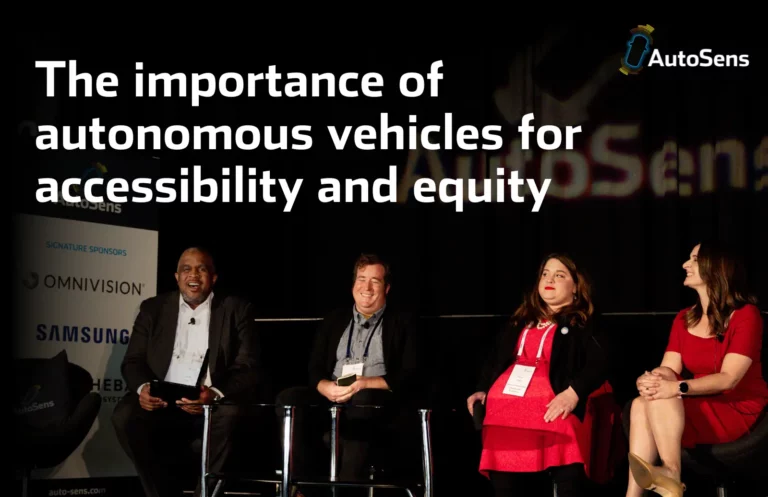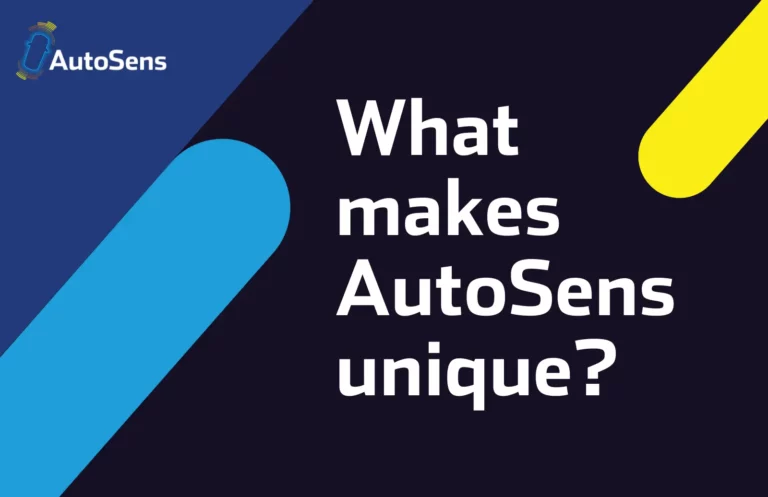Google has released data showing its vehicles have now completed more than 1.5 million miles of journeys driven without human intervention.
Sign up for updates, articles and insights: [button link=”#mailmunch-pop-172267″ linktarget=”_blank” color=”blue” size=”medium” style=”flat” fullwidth=”false”] [icons style=”icon-envelope” size=”18px” color=”#ffffff”] Join the AutoSens Mailing List [icons style=”icon-arrow-right” size=”18px” color=”#ffffff”][/button]
This comes as a small relief following the recent news story of a minor (but reputationally damaging) Google Car collision on Valentine’s Day a few weeks ago. This distance milestone prompted us to have a look at the critics of these big numbers as ‘inconsequential’ in comparison with the mileage driven by New York Taxis, for example, and why those critics are failing to understand the number, and the speed at which Google is progressing.
So let’s break it down…
- There are more than 13,000 taxis on the road in New York city
- There are currently just over 50 Google cars on the road in California, Texas and Washington states
- NYC Taxis drive, on average, a total of 1.2 million miles per day. This experience is split among more than 50,000 drivers.
- Google cars drive a total average of 1000 and 1500 miles per day, but that experience goes into a single collective data bank.
- Depending on the type of Taxi, vehicles are inspected between 1 and 3 times per year.
- Google cars are analysed in real-time, and any unusual behaviour is carefully pored over to work out problems. All data gathered previously is also continuously available.
As for accidents, the figures get a little trickier – on average the accident rate seems comparable to what we know about New York Taxis (although the publically released data is very old), but accidents involving Google cars occur at much lower speeds and are far less likely to hurt passengers or pedestrians.
In fact, from the past 6 months, two of the three incidents involved Google vehicles being rear-ended by other vehicles at very low speed, and there were no accidents reported for the last three months.
If you then say “Well that’s not reliable, that’s what Google says” actually I lean towards trusting Google (which releases a report on every incident every month) far more than NYC’s Taxi and Limousine Commission, which hasn’t directly released accident figures since 1999.
Sign up for updates, articles and insights: [button link=”#mailmunch-pop-172267″ linktarget=”_blank” color=”blue” size=”medium” style=”flat” fullwidth=”false”] [icons style=”icon-envelope” size=”18px” color=”#ffffff”] Join the AutoSens Mailing List [icons style=”icon-arrow-right” size=”18px” color=”#ffffff”][/button]
When they did release data, it also highlighted a very high injury rate to passengers: 71%, along with high injury rates to pedestrians (13%) and cyclists (7%) and more recent DMV NY (Department of Motor Vehicles for New York State) statistics report an average of 6 fatalities per million miles driven by Taxis.
Helpful summaries aside, the best current source of data is the NYPD, which although up-to-date, is rather unwieldly. Their stats report an average of 13,000 accidents per year, or roughly 35 per day overall. But this figure has been pretty much stable for the past decade. No intelligent learning going on there, if anything, figures have worsened slightly as drivers have become younger and therefore less experienced.
Incidentally, NYC’s open data platform does provide detailed trip data – great for data junkies, each file has millions of items of data, but no accident data so not useful for this feature.
Googlers working on ‘Project X’ actively come up with strange scenarios to test their systems at private test facilities – helping the vehicles deal with even stranger incidents on public roads, for example when one Google car came across a crowd pretending to be a swarm of frogs and happily dealing with it without even a raised digital eyebrow.
Where this pattern of rapid learning is most exciting is in Google’s report over ‘disengagements’. These are when the driver of the vehicle has intervened and retaken control of the vehicle because they felt the car was not behaving correctly, or the car deliberately asked for driver support.
At the end of 2014, that figure was 785 miles per disengagement, by the end of 2015, the figure sat at 5318 miles. That’s a 7x improvement in one year.
And their cars continue to rack up a greater number of miles each month as well, accelerating the learning still further.
But let’s not write off New York’s Taxi drivers just yet. In 2014, Mayor Bill de Blasio pledged to work towards ending traffic related deaths by 2024, and launched a year-long Vehicle Safety Technology pilot in 2015. That ends this month (April 2016) and involves 33 licensed vehicles (about half of which are New York’s famous Yellow Cabs), equipped with one of three different safety systems designed to enhance driver awareness – more commonly known as Advanced Driver Assistant Systems (ADAS).
This active safety technology, while created with outstanding intent, is still leaving error-prone humans, who still cause 80%-90% of accidents, in control. At least drivers are more aware (thanks to more digital eyes, connected to more digital brains) and will be better equipped to avoid accidents in the future.
However, going back to our original thread – if you apply Google’s accident figures against the mileage chewed up by New York’s ‘normal’ Taxis, you will begin to appreciate that not only is it a ridiculous comparison, but also that ADAS (advanced driver awareness systems) and the Autonomous vehicle industry, while small today (compared with the established car industry), will not have to wait long before it moves into the fast lane.
Sign up for the latest updates: [button link=”#mailmunch-pop-172267″ linktarget=”_blank” color=”blue” size=”medium” style=”flat” fullwidth=”false”] [icons style=”icon-envelope” size=”18px” color=”#ffffff”] Join the AutoSens Mailing List [icons style=”icon-arrow-right” size=”18px” color=”#ffffff”][/button]






